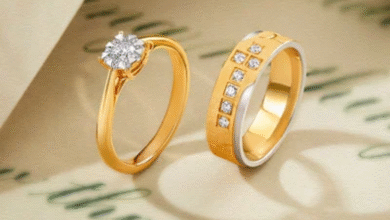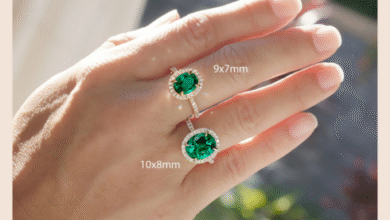
The Rise of Clean Beauty: Transforming the Wellness Industry
The clean beauty movement has revolutionized how consumers approach personal care, creating a seismic shift toward transparency, sustainability, and ingredient consciousness. This transformation reflects a broader cultural awakening to the importance of holistic wellness, where what we put on our bodies matters as much as what we put in them.
Understanding Clean Beauty Standards
Clean beauty encompasses products formulated without potentially harmful ingredients, emphasizing natural, organic, and sustainably sourced components. Unlike conventional beauty products that may contain synthetic preservatives, sulfates, parabens, and artificial fragrances, clean beauty prioritizes ingredient safety and environmental responsibility.
The movement goes beyond simply avoiding certain chemicals. It encompasses ethical sourcing, cruelty-free testing, sustainable packaging, and transparent labeling practices. Consumers increasingly demand to know exactly what ingredients are in their products and how those ingredients are sourced and processed.
This shift has prompted many brands to reformulate their products, investing in research and development to create effective alternatives to traditional synthetic ingredients. The result is a new generation of products that deliver performance without compromising on safety or environmental impact.
The Science Behind Clean Formulations
Contrary to misconceptions that clean beauty products are less effective, modern clean formulations often outperform their conventional counterparts. Advances in green chemistry have enabled the development of plant-based ingredients that deliver powerful results while maintaining gentleness on the skin.
Botanical extracts, marine-derived ingredients, and naturally occurring compounds offer potent anti-aging, hydrating, and protective benefits. For instance, bakuchiol, derived from the babchi plant, provides retinol-like benefits without the irritation associated with synthetic retinoids. Similarly, hyaluronic acid sourced through fermentation processes offers superior hydration compared to synthetic alternatives.
Clean beauty brands invest heavily in research to understand how natural ingredients interact with skin biology. This scientific approach ensures that products are not only safe but also effective, debunking the myth that clean necessarily means less potent.
Consumer Awareness and Ingredient Literacy
The clean beauty movement has empowered consumers to become more ingredient-literate, reading labels with the same scrutiny previously reserved for food products. This awareness has led to increased demand for products with recognizable, pronounceable ingredients and clear explanations of their benefits.
Social media platforms and beauty influencers have played a crucial role in educating consumers about ingredient safety and efficacy. Online resources now provide comprehensive databases of cosmetic ingredients, helping consumers make informed decisions about their beauty purchases.
This heightened awareness has also sparked important conversations about greenwashing, where brands may market products as “natural” or “clean” without meeting meaningful standards. Consumers are becoming more sophisticated in identifying authentic clean beauty brands versus those engaging in misleading marketing practices.
The Wellness Connection
Clean beauty aligns perfectly with the broader wellness movement, recognizing that beauty and health are interconnected. Many consumers view their skincare and beauty routines as extensions of their overall wellness practices, seeking products that support both appearance and well-being.
This holistic approach has led to the development of products that address multiple concerns simultaneously. For example, skincare products now incorporate adaptogenic herbs that help skin cope with stress, or probiotics that support the skin’s microbiome for improved barrier function.
The connection between clean beauty and wellness has also influenced product development in categories beyond skincare. Clean beauty and wellness products now encompass everything from makeup to hair care, all formulated with the same principles of safety, efficacy, and environmental responsibility.
Sustainability and Ethical Considerations
Environmental consciousness plays a significant role in the clean beauty movement. Consumers increasingly consider the environmental impact of their beauty purchases, from ingredient sourcing to packaging disposal. This awareness has driven innovation in sustainable packaging solutions, including refillable containers, biodegradable materials, and reduced plastic usage.
Ethical sourcing has become equally important, with consumers supporting brands that ensure fair wages for farmers and workers involved in ingredient production. Many clean beauty brands maintain direct relationships with suppliers, ensuring transparency throughout the supply chain.
Water conservation, carbon footprint reduction, and waste minimization are now standard considerations in clean beauty product development. Brands are investing in renewable energy, sustainable manufacturing processes, and circular economy principles to minimize their environmental impact.
The Future of Clean Beauty
The clean beauty movement continues to evolve, driven by ongoing research, technological advancement, and changing consumer preferences. Emerging trends include personalized clean beauty products tailored to individual skin needs, innovative delivery systems that enhance ingredient efficacy, and increased focus on skin microbiome support.
Biotechnology is playing an increasingly important role, enabling the creation of lab-grown ingredients that offer superior performance while reducing environmental impact. These innovations allow brands to maintain clean formulations while delivering cutting-edge results.
Regulatory changes are also shaping the future of clean beauty, with increased scrutiny of cosmetic ingredients and growing pressure for transparency in product labeling. These developments will likely accelerate the adoption of clean beauty principles across the entire industry.
Making the Transition
For consumers interested in transitioning to clean beauty, the process doesn’t need to be overwhelming. Starting with basic products like cleansers and moisturizers allows for gradual adjustment while evaluating how your skin responds to clean formulations.
Research is essential when selecting clean beauty products. Look for brands that provide detailed ingredient lists, explain their sourcing practices, and offer transparency about their manufacturing processes. Reading reviews and seeking recommendations from trusted sources can help guide your choices.
The clean beauty movement represents more than a trend; it’s a fundamental shift toward more conscious consumption and holistic wellness. As consumers continue to prioritize health, sustainability, and transparency, clean beauty will undoubtedly continue to grow and evolve.

